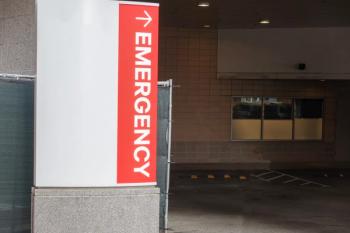
How low health literacy impairs patient outcomes | Ashok Roy
Only 12% of American adults are proficient in health literacy. Providers need to find ways to communicate with patients in ways they can understand.
One of the most frustrating aspects of practicing medicine is having the tools to help improve a patient’s health, but then seeing that patient not follow the treatment plan.
I once had a middle-aged female patient, who had prediabetes and was struggling to control her hypertension. She was accompanied by her daughter. During our last visit we had jointly created a treatment plan; however, she was not compliant with her medications, nor did she make recommended alterations to her diet.
As we discussed the importance of medication compliance and diet, it became apparent that the patient’s daughter not only provided emotional support to the patient, but also interpreted and simplified my instructions and advice. In an all-to-common scenario, I was a physician dealing with low health literacy.
Nine out of every 10 American adults lack the skills required to effectively manage their health and prevent disease. Alarmingly, only 12% of American adults are proficient in health literacy.
Often referred to as the “silent epidemic,” health literacy is a complex phenomenon in which individuals, families, and communities are unable to find, understand, and use information and services to inform health-related decisions and actions for themselves or others.
The medical community has failed to make significant improvements in communicating with patients in ways in which they are familiar and can easily understand. Medical jargon can be confusing; when this information is provided in a medical office or exam room environment, where the patient may already be uncomfortable, the provider-patient conversation can be misunderstood or compromised.
A patient’s level of health literacy is ultimately tied to the health literacy skillsets of healthcare providers. Research shows that clinicians struggle to identify patients with limited health literacy.
While the onus is on health care professionals to assess health literacy, patients are not always forthcoming. Due to feeling overwhelmed or even embarrassed for not understanding, patients often mask their confusion. Therefore, providers cannot simply ask a patient whether they understand a treatment plan or have questions; an essential component to effectively diagnosing and addressing low health literacy is by clarification.
What can healthcare providers do when it comes to health literacy?
First, clinicians need to use language that the patient can understand, such as saying cancer instead of malignancy; bruise instead of contusion; birth control instead of contraception.
Asking patients to repeat what they have just heard can also be a useful tool. This simple method, known as ‘teach-back’ requires patients to break down the message, interpret it, and explain it in their own words.
If a provider has recommended the patient schedule an echocardiogram, and the patient explains she/he needs to make an appointment to have pictures of her heart taken, then the message has been effective, and the provider has the necessary clarification.
Using a team-based approach is the ideal way to address health literacy. One option to obtain an unbiased assessment of a clinic’s performance on addressing health literacy, is to ask patients to complete the
The
Clinical teams should use the results of these surveys and assessments to evaluate patients’ knowledge and comprehension at every touchpoint. Becoming more effective communicators will allow clinical teams to engage better with their patients, leading to improved patient outcomes.
Every healthcare provider needs to be aware of the impact of low health literacy and how they can effectively identify and address low health literacy with their patients.
Ashok Roy, MD, MPH, MBA is the chief medical officer at Caravan Health, a company which utilizes value-based care methodologies and technology to help providers and health systems improve patient outcomes.






















































































